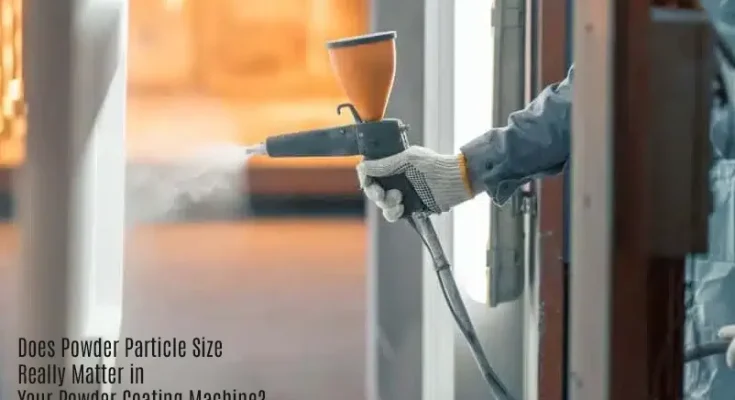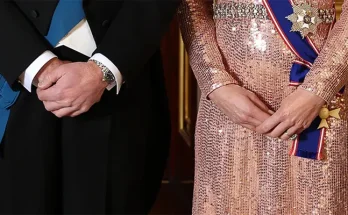Every painter knows their tools can only go so far—what’s in the gun matters just as much. That’s where powder particle size steps in. It’s a detail easily overlooked, but it can make or break how your powder coating machine performs.
How Does Particle Granularity Impact Coating Adhesion
The size of powder particles directly affects how well they stick to a surface. Smaller particles carry more surface area relative to their weight, so they cling more easily. This can lead to smoother coverage and fewer gaps. In contrast, larger particles may fall away before curing, especially on vertical or curved surfaces. A powder coating machine depends on that first layer sticking tight—if it doesn’t, nothing cures evenly.
However, it’s not just about sticking—it’s about staying put through the entire process. Fine powders embed into the surface better during pre-heating, especially if the part being coated has tight corners or hard-to-reach spots. The grip starts with the powder itself, and if granularity is off, adhesion suffers. For anyone running a professional powder coating machine setup, dialing in the right particle range gives a strong, reliable bond from the start.
Electrostatic Behavior Linked to Powder Particle Dimensions
Particle size doesn’t just change how powder lands—it shapes how it reacts to an electric charge. Since powder coating machines use electrostatic force to pull powder to metal, this charge behavior is critical. Smaller particles charge more quickly and hold that charge longer, improving efficiency and reducing overspray. But if particles are too fine, they might cause clouding or uneven coverage.
Larger particles, by contrast, charge slower and can be harder to direct. That means your powder coating machine might need to work harder or use more powder to get the same result. Finding a balanced particle size helps ensure better charge control and smoother operation overall. Fine-tuning this factor can save both time and materials, especially in high-volume or detailed projects.
Fine vs. Coarse Particles – Which Delivers Superior Finish Quality
Fine particles often deliver smoother finishes because they melt more evenly during the curing phase. This is especially important for high-end or highly visible projects—think automotive trim, architectural panels, or custom equipment. The powder coating machine’s spray pattern also tends to be more uniform with fine particles, which reduces mottling or texture inconsistencies.
Coarse powders, though, have their place. They’re better for creating textured finishes or high-build coatings designed to cover imperfections in the substrate. For industrial applications where surface perfection isn’t everything, a coarser powder might be ideal. The trick is choosing based on the end goal—smooth finish or tough texture—then matching the particle size to your powder coating machine’s capabilities.
Particle Size Distribution’s Role in Minimizing Coating Defects
Even distribution of particle sizes in a single powder batch plays a major role in avoiding coating issues. If a batch contains too many fines or too many coarse particles, it can lead to uneven thickness, orange peel textures, or inconsistent curing. A well-blended distribution ensures that powder flows smoothly through the spray gun and lays down evenly on the surface.
For operators using a professional-grade powder coating machine, this balance translates into less rework and fewer rejected parts. Whether you’re coating small parts or full panels, having a consistent mix means better results with fewer surprises. It’s one of those behind-the-scenes elements that makes a visible difference in the final product.
Can Powder Particle Variation Affect Equipment Performance
Absolutely. Powder that’s too fine can clog the system—nozzles, hoses, and fluidizing beds. It’s like trying to blow dust through a straw. On the flip side, oversized particles can cause blockages or require higher air pressure, putting strain on your powder coating machine’s components. Either way, inconsistent powder puts wear on your gear and slows down production.
Keeping an eye on powder quality and size consistency helps avoid costly downtime. A smooth-running machine isn’t just about calibration—it depends on what it’s handling. Whether for small batch jobs or full production lines, choosing powders that match your machine’s specifications makes everything run cleaner, faster, and longer.
Achieving Desired Texture Through Controlled Particle Selection
Texture isn’t always an accident—it can be the result of thoughtful powder selection. Coarser particles tend to leave more pronounced textures, while fine particles blend for a sleek, glossy finish. That’s how industrial coaters adjust aesthetics without changing equipment settings. By switching up the powder size, they customize the outcome.
For shops using the same powder coating machine across different jobs, having the option to create textures with particle size alone adds flexibility. Whether going for a hammered look or a satin smooth layer, the particles themselves shape the feel of the final result. This means fewer add-ons and less hassle adjusting heat or dwell times.
Particle Dimension Influence on Powder Usage Efficiency
Efficiency isn’t just about how fast you coat—it’s how much powder actually sticks. Fine particles tend to waste less during application, especially on intricate parts. They follow the electrostatic path more accurately and settle in tight spots with less blowback. This makes them ideal for minimizing overspray.
Larger particles may seem easier to handle, but they don’t always stay put. They can rebound more often, leading to higher reclaim but lower first-pass transfer rates. Getting the particle size right improves coverage per pound, lowers material costs, and keeps your powder coating machine performing at its best.




